

| andrew edward bailey | games | personal website |
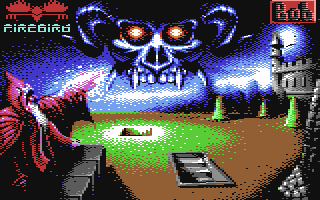
These two games were developed and released in 1986 and 1987. They were top down shoot'em up games liked to 'Gauntlet' of arcade fame at the time. This was an inaccurate comparison, as Druid involved a bit more strategy than the well known arcade co-op. In fact there was a little known predecessor to Gauntlet called Dandy, which was more similar, but Druid was considered better in reviewer comparisons.
Druid was primarily for the Commodore 64 home computer, although ZX Spectrum and Amstrad versions were done for Druid and an Amiga version of Druid II. The latter was the first game written by Bullfrog, of Peter Molyneux fame.
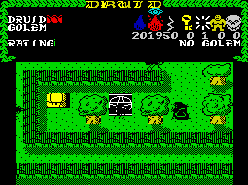
I should make some observations about the Commodore 64 here, as it is now about 20 years old, and a lot readers will not know what this machine is. Wikipedia has an entry (of course), http://en.wikipedia.org/wiki/Commodore_64.
But I should point out that the 64 stands for 64K of RAM. In todays context that is less space than a single texture or bitmap in a current game.
So when looking at 8 bit games in general remember that a lot of fun and gameplay was crafted into the same space an artist uses in a hour, or a musician uses in less than 3 seconds of compressed audio
The main gameplay in Druid consisted of a top down (with a slight tilt) 4 directional scrolling colour (salespoint of the eighties) map.
Our hero, the Druid in a blue cloak, ran in 8 directions shooting nasties when he came across them (which was all the time). He had a choice of three weapons (elemental based) and a few other tricks like invisibility and chaos bombs. These would be found on chests left lying around for some reason.
The chest would hold several items, but the Druid could only choose one of them as the chests where booby trapped. This is where the deeper gameplay elements came in over that other game.
The most famous chest item was the Golem. Based on the folklore creature made from clay, this could be conjured up from the ground and it would go around bashing up the baddies, taking gradual damage till it died.
The Golem could be controlled by either one of three commands (stop, go and follow) or by a second player. I have seen in an interview with Dene Carter that this is possibly the first co-op feature in a game (home game at least).
The 8 levels of Druid started in a garden on top of an underground dungeon, which you progressed your way down through.
Druid II built on this universe with different Golem types, an outside world, and more of a storyline in the game progression. You started in a destroyed village full of the zombies of the previous tenants and progressed to find your way to a castle and destroy the skulls in it.

The Druid games reviewed very well, with it being the game of the month in most magazines, and getting 88% in Zapp64 ( definitive review magazine of the 80's http://en.wikipedia.org/wiki/Zzap!64).
Feel free to download my Album in pdf form for Druid from here, but it is >64MBytes. There is an excellent site that celebrates the publisher of these two titles, Firebird.
It has articles for both Druid 1 and Druid II. Also see http://en.wikipedia.org/ wiki/Druid_%28video_game%29
If you enjoyed this article why not become a fan on facebook, and find more links and exclusive information.

Dragon's Breath, aka Dragon Lord in the US, was a video game for the Amiga home computer developed in 1989 by myself and two others and released in 1990 by Palace Software.Ports to the PC (we are talking XT here) and an Atari ST version were also made.
The game is a turn based fanatasy role playing game, played out in a 'hand of god' format. You get to choose to play one of three dragon lords (him, her and it) and play against friends or the computer. You are trying to hunt down the secret of immortaility hidden in the land of Anrea and to do this you breed dragons that can look for the talisman parts.
However, to breed dragons costs money, and the best way to get money is to conquer the inhabitants of Anrea and tax them.
So the game mainly consists of first conquering villages, but then helping them grow (because you get more taxes that way), which means destroying the villages you don't own, because the inhabitants of Anrea are always at each others throat. And because there are three players doing this you get dragon to dragon conflicts as one dragon protects a village from another.
There is also the odd barbarian roaming the world ready to slaughter a dragon he comes across, and a princess that gets kidnapped.
Being turn based meant that you made all your decisions for each month (dragons fly by the light of the moons) regarding your spell stock and the health of your dragons and the missions you wished to take on that month. Then after all three players had done that you hit the go button and the simulation rolled out, as you watched the dragons on the map fly over the land and attack other.
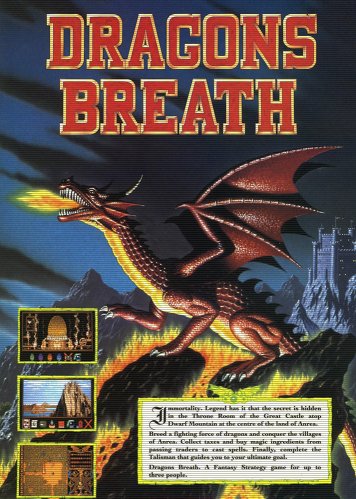
You can play Dragons' Breath today via emulators for the Amiga and Atari ST, and also on your PC. The ROM images can be found on many sites like this one:-
www.classic-pc-games.com/pc/strategy/dragon_breath_-_dragon_lord.html.
Beware of some of the Amiga images, they may not work correctly, even if they appear to work. This is due to the original disk copy protection that sliently introduced flaws into the game if the protection was hacked, like the spell system always blowing up.
The ones that still require you to enter words from the manual (usually supplied as well) are more likely to work.

Because the game was developed on the Amiga, the artwork was developed with its capabilites in mind. This meant each screen could not use more than 32 colours, so the artist had to design a palette for each screen. However, the palette of 32 colours could be changed at any point on the screen, so the menu icons on the bottom had their own set of 32 colours.
The arcade section could only use 16 colours, as the shadow effect use a bitplane trick, with half the palette being a dimmed version of the other half.
The game reviewed very well (HOL archive here) receiving a 91% from Zzapp (premier review magazine of its era) and in general was high 80's low 90's.

Surprising the game still rates fairly well in the abandonware universe. See the previous linked classic-ps-games.com for a user vote of 84%, very close to the release scores.
Andrew Bailey
Andrew was responsible for the main game concept and all programming.
http://au.linkedin.com/in/andrewebailey
David Hanlon
David was responsibile for the music and sound effects. He also contributed to the design, especially finer points of the spell system, and the manual. David was also taxi, as he was the only one with a car.
Simon Hunter
Simon was the art dude, and brought his unique comic book style to the game.
http://uk.linkedin.com/pub/simon-hunter/20/392/51A


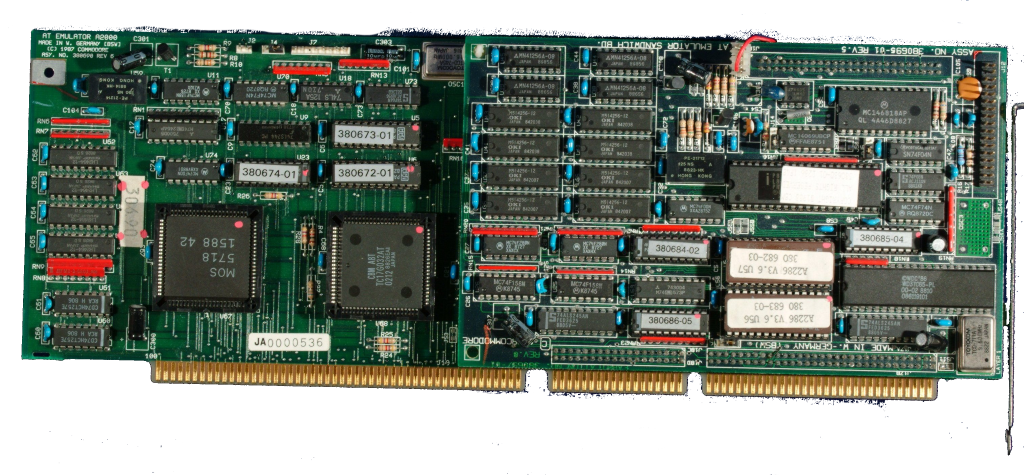
The game almost didn't make it because of hardware (hard disk) failure.
The game was developed on an Amiga 2000 with a PC-XT bridge board provding the hard disk support.
One day, after much time had passed since a backup, the hard disk just failed, and many hours of re booting didn't bring it back up. So I went on a long walk and resigned myself to a long session re-coding. When I got home I powered up the Amiga once more and the hard disk magically whirled into action.
I quickly went and bought 50 floppy disks and backed up the hard disk. The hard disk didn't fail again, but I learnt my lesson and have been a backup fanatic ever since.
Archive site Hall of Light
Fan site of Retro.
Sunspire on YouTube's playlist featuring the music and his own remix.
http://www.youtube.com/user/ sunspirerecords#g/c/F78E2CF3BAEE7F37
A (recent) user review of the Atari ST version and video.
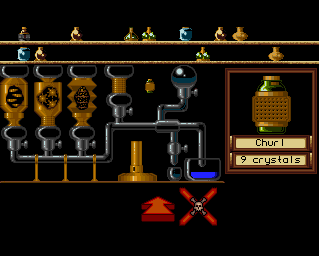

Golem Crusades is a fantasy shooter with real time strategy. The player is in the thick of action, under constant attack and a pocket of spells for defence. At the same time the player must command a legion of golems to retake the land back over 10 levels
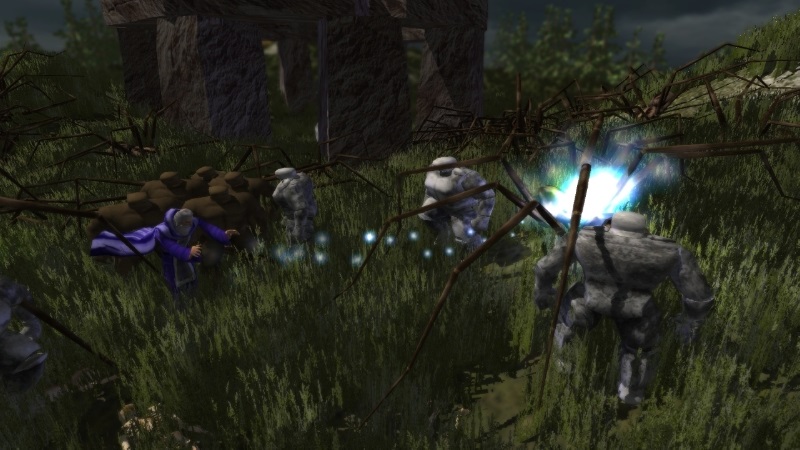
The play area is viewed from a 3/4 top down point of view. This allows you to percieve the immediate area around the Druid and issue commands to Golems. Unlike most other RTS games, you must fight your way to your troops to issue new commands, so you need to think things out in advance to make the most of your trekking.
Golem Crusades is a reboot of a commodore 64 classic, Druid. This IP stems back to the days of when Dene Carter and Peter Molyneux were starting their video game careers and would see them meet again to bring the Fable series. The original programmer, Andrew Bailey, now relaunches this IP firstly on PC and then on other platforms such as iPad.

The game has been designed around the concept of a compact shooter and simple storyline. It doesn't attempt to wield a large story or narrative, but just give a fast paced, heart pounding blast with the need for a little bit of grey matter as well.
Programming and Concept
3D Artwork
UI Artwork
Music
Voice
Design Consultant
Production
Andrew Bailey
Warren Hawkes
Georgia Patton
David Hanlon
Steve Cooper
Dene Carter
Vince Donato
And thanks to... Philip, Connor, Matt, Cameron, William, Kory.
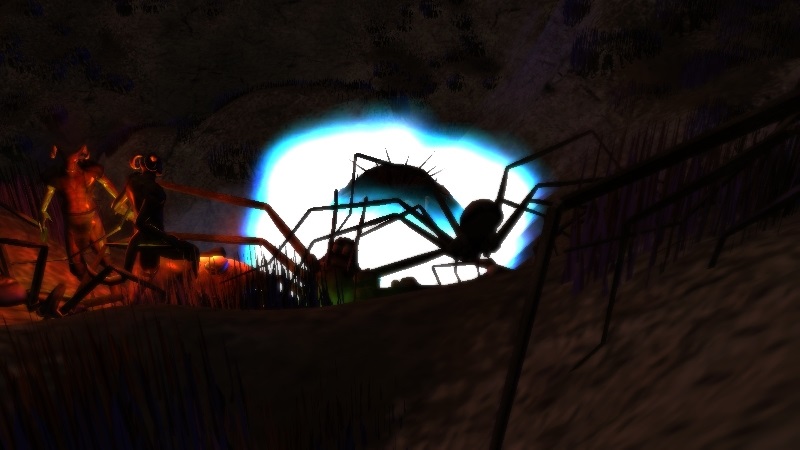
OS: Windows® XP (with Service Pack 3) , Windows Vista® Window 7 ®
CPU: 1.6 Hz Dual Core recommended.
RAM: 512 MB RAM
HDD: 500 MB
Video: 256MB NVIDIA® GeForce® 6600 GT or better or ATI Radeon™ 1600XT or better.
Sound: 100% DirectX® 9.0c compliant sound card
DirectX: Microsoft DirectX® 9.0c (shader model 3)
Download size: 300MB

Drop Spider Games is proud to have worked on Twiitch's up-coming iPhone/iPad game 'Coco Loco', published by Chillingo.

Coco Loco is a physics based puzzle game centred around an adventurous group of Marshmallows who set off searching for hot chocolate in a distant Aztec land, only to encounter the cranky guardian Cocoa beans.
Release the costumed Marshie hostages from their Cocoa captors by flinging the Hero Marshies, causing spills of flowing cocoa, explosions of jelly, ropes and much more.
Learn to use the powers of each Marshie in the correct order to unleash the sticky mayhem required to solve the 60 levels over four beautiful, mystic lands.


| All Rights Reserved 2019. |